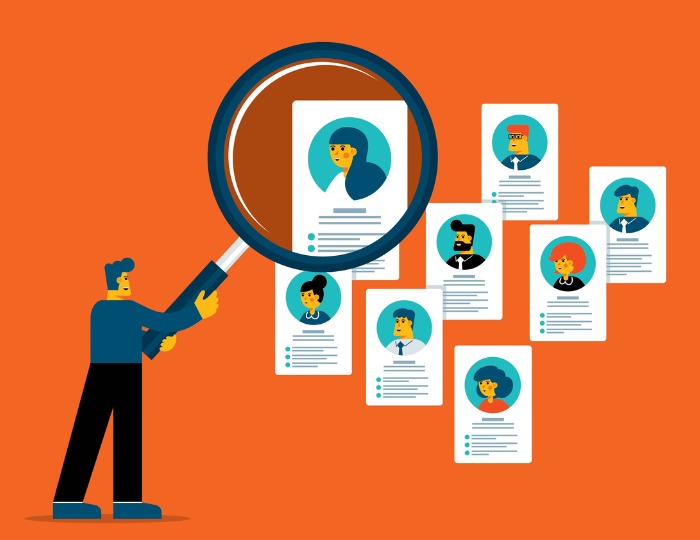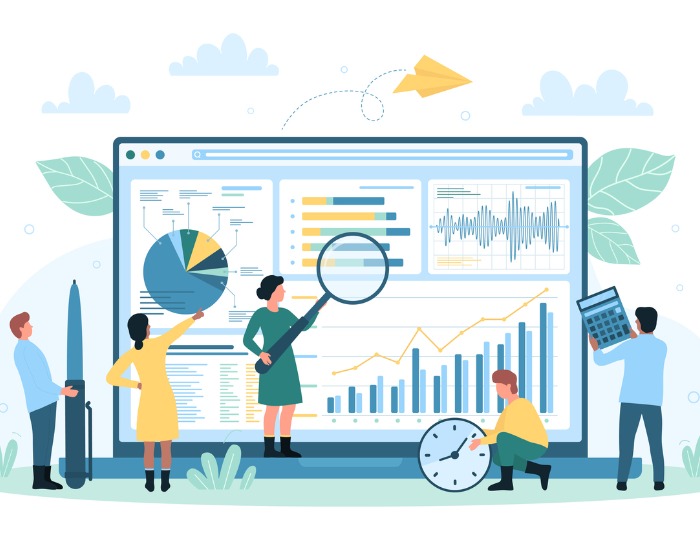Table of Contents
Table of Contents
- Why is it important to use proposals for landscaping services?
- How proposals provide clarity and avoid misunderstandings
- How landscape bid proposals showcase expertise and attention to detail
- How to create a landscaping proposal
- Benefits of using Aspire software for landscaping proposals
- Try Aspire for efficient landscaping proposal management
A proposal isn’t just a description of landscaping services and how much they cost. It’s your first professional communication with a prospective customer, setting the tone for your relationship.
Landscaping businesses depend on a robust, loyal customer base—especially if their sights are set on growth—and a great proposal builds brand trust from the beginning.
Your business proposal to potential customers should outline the scope of the landscaping services you’ll provide, as well as terms and conditions for project execution and payment.
This article explains how a free downloadable landscaping proposal template can help to standardize your workflow and why you may need to upgrade your process in the future.
Why is it important to use proposals for landscaping services?
Potential customers may only want to know how much something will cost. But the details matter when building a relationship with a new client, whether for a maintenance contract or one-time service.
Your proposal is an opportunity to provide clarity and transparency surrounding your landscaping services.
→ The more detail, the fewer misunderstandings down the road.
You introduce yourself as a professional enterprise to your market when you include a cover letter with your project proposal. The care you take in the bid demonstrates the attention you provide within a landscaping project.
Use your proposal as an opportunity to demonstrate your:
Expertise in the range of services you provide
Ability to accurately price labor and materials for a property
Creativity in presentation and branding
Attention to detail in the estimate
A proposal with great branding and precise information can set you apart from the competition, especially when breaking into new markets or verticals.
How proposals provide clarity and avoid misunderstandings
When things are in writing, it benefits both the landscaper and the prospective client. By taking time to fill out a bid, you have the opportunity to reflect on your prices and ensure you’re charging enough to stay profitable.
You can prevent the customer from making assumptions about what’s included in generic non-specific terms such as “maintenance” with a services proposal that breaks down every aspect of the project with the following:
Design
Installation
Maintenance and lawn care
Pest control and fertilization
Tree and plant care
The breakdown should cover associated costs, including material, labor, and other expenses.
A proposal can even help you repair a customer relationship after a misunderstanding because the customer has the terms for the project and the payment in their email inbox.
How landscape bid proposals showcase expertise and attention to detail
Proposal examples that only list “lawn care” or “tree installation” may get straight to the point, but they also leave room for customers to wonder what a specific service entails. By providing more detail, you demonstrate to potential clients that you know precisely what it takes to get the job done.
→ Consider including images of previous projects similar to the proposed contract to visually represent your expertise.
The proposal letter also gives you a chance to highlight your niche expertise by describing what sets you apart from the competition, such as:
Eco-friendly practices such as native plant installation and low- or no-water gardens
Innovative landscape designs
Specialized services such as pest control and tree care
Showing your expertise in other areas can create future opportunities within your niche or high-profit services.
How to create a landscaping proposal
Even with a great proposal sample to follow, you still have to customize it to your business, the client, and their property.
It can be time-consuming, but it goes a long way to avoid hassle in the long run.
Gather client requirements and preferences
Every new job starts with a consultation and walk-through of the property. The more information your account managers gather, the more detailed the proposal will be. During the consultation, identify the following:
The goals for the property
The needs of the client
Preferences for frequency of service
Budget for the project
During the walk-through, be sure to document the existing property and make a note of any features that will need to be installed, including:
Plants, shrubs, and trees
Outdoor living spaces, like patios, and hardscape elements, like walls and walkways
Irrigation systems
Finally, take measurements of the property as well as the condition and difficulty of the site. The more detailed you are during the walk-through with photos and descriptions, the better able someone else will be to take over the account if necessary.
Create a detailed landscaping plan
With the information gathered during the consultation, work with operations to create a detailed landscaping or lawn care service plan. If you’ve been in operation for a while with experienced crews you trust, it can be easy to reduce new clients to shorthand for maintenance service or color application.
Establishing a standardized, thorough process for planning every landscaping service ensures you’ll deliver consistent, high-quality service to your clients, no matter the size or complexity of the job.
Plans should include the following:
Drawings to visualize installed elements
The required materials and plants for the job
Necessary on-site equipment
Size of the crew to complete the work
Going into greater detail during the planning phase allows you to understand your resource allocation for the coming months and plan for hiring, purchasing new equipment, and ordering supplies and materials in bulk.
Estimate project costs and timeline
Poor planning leads to surprise, last-minute purchases that destroy profit margins. Using templates and cultivating a culture of detailed planning goes a long way to giving a landscaping company foresight into their costs in the next week, month, and quarter.
When building your proposal, consider everything that will go into executing the project, including:
Labor costs
Materials and supplies
Permits
Additional expenses, such as fuel costs
Along with knowing what a project will cost, it’s critical to know how long it will take to complete. Rather than guesstimating a timeline based on similar properties, use the proposal to outline specific phases and milestones for completion.
With established milestones, you’ll know if you fall behind on getting a project done on time and can proactively reallocate resources to ensure you meet the client’s deadline, building brand trust and your customer base.
Present the proposal to the client
A proposal does a lot of work in-house, helping landscapers to understand their business operations better, such as:
A plan for completing the project that addresses the client’s needs and the complexities of the property
The costs associated with a project
A timeline for completion, with phases and milestones
Resource allocation to better understand crew and equipment available
This isn’t an in-house document, so send it to the client once it's complete. While you can print or email to a prospective client, there are benefits to scheduling a call to go over the document, such as:
Highlighting the key areas of the proposal, including niche services
Pointing out opportunities for customization and add-ons
Confirming the scope of the project, the client’s needs, and the goals for the property
During a follow-up call, you can also address customer questions or concerns and offer to revise the proposal based on their feedback.
Finalize the proposal and obtain client approval
Follow-up calls are a great way to identify what may be causing clients not to sign a contract and can help you improve your sales process. When a follow-up call goes well, incorporate feedback revisions and send the final proposal for approval.
Once the client wants to move ahead, fill out a landscaping contract template and have both parties sign to legally bind the proposal.
Benefits of using Aspire software for landscaping proposals
A template is only an interim solution. When landscapers use templates for every potential client, it becomes too time-consuming for your account managers with skills better focused on growing the company.
Using end-to-end landscaping business management software, such as Aspire, eliminates the mundane tasks from your office team’s day-to-day.
Aspire is a cloud-based platform designed for the landscaping industry, so it functions the way you do with an intuitive user interface, robust functionality, and integrated workflows that streamline operations and drive new efficiencies.
Professional proposal generation
Set yourself apart from the competition by customizing Aspire’s editable templates with your branding. Using software makes it easy to send professional proposals to every client, with all the critical information that’s easy to find.
→ With Aspire, it’s fast and simple for your team to close sales.
Streamline the estimate creation process
Aspire makes estimating easy with product kits that combine labor, materials, and supplies for commonly used services into a single line item. All landscapers need to do to create precision templates is adjust the takeoffs.
→ PropertyIntel is a virtual takeoff tool integrated with the Aspire platform that uses aerial imagery and precision measuring tools, eliminating the need for account managers to go into the field.
With Aspire's mobile device functionality, anyone on your team can quickly create an accurate proposal with built-in margins and takeoffs from the office or the field.
Accurate cost estimation
Too often, landscapers underprice their services to stay competitive in their market or because they don’t have a comprehensive understanding of what goes into delivering their services.
Aspire provides tools and features that generate accurate proposals, ensuring you’re operating profitability every day.
Customize margins and markups
Aspire users know with absolute certainty that they’re billing at profitable rates because the software automatically factors in margins and markups.
Rather than leaving your profits up to guesswork and chance, you can establish margins for:
Labor
Materials and supplies
Subcontractors
Any other direct costs
If you’re operating across multiple branches, divisions, or service verticals, you can customize your margins at every level of your organization, ensuring you meet the market average.
Efficient project management
Software isn’t just a substitute for generating landscaping service proposals.
→ Aspire empowers your team’s best work across the organization, including project management.
The platform’s features help landscaping businesses regularly exceed client expectations by delivering exceptional quality on time. The fastest growing landscaping companies use Aspire from proposal to invoice to:
Plan new projects
Track progress
Drive responsive management
Transform your company culture with software that eliminates the mundane and empowers innovation and ambition for growth.
Client communication and collaboration
The easier it is to work with your company, the more likely customers will accept proposals and sign contracts. Aspire doesn’t just support business management. It also provides in-platform tools for client communication and a customer portal.
Customer portal for e-signature contracts and online bill pay
Operating online makes it easy for customers to complete their obligations, so it’s faster than ever to progress from landscape and lawn maintenance proposals to contracts. With Aspire, you can send invoices and accept payments directly from the platform.
Clients can easily e-sign their contracts and pay their bills using a credit card or ACH bank transfer using a hyperlink in the document.
Your team can access the platform from anywhere using a mobile device such as a laptop or tablet to get customer approval for tag-on services right from the job site.
Centralized document storage
Secure document storage is crucial as your company scales. It must also be easy to access, retrieve, and organize documents such as pending, past, and current proposals. While your desktop storage or Google Drive may work for a while, having customer information at your fingertips becomes imperative as you grow.
Aspire is a centralized repository with a CRM designed for the landscaping industry, where you can search by property or client. With tools to prevent duplicate record creation and cloud-based storage, you can get up to speed on a client with just a few clicks.
Integration with scheduling and billing
Aspire integrates your estimates and proposals into your scheduling and billing functionality as an end-to-end solution. Approved estimates become work tickets in the scheduling module.
→ Use intuitive drag-and-drop functionality to set your schedule and adjust it with automated route optimization.
When a project is complete, mark the work ticket completed to automatically generate an invoice, ready to send to the customer.
Try Aspire for efficient landscaping proposal management
Aspire helps residential and commercial landscaping businesses streamline proposal management and create efficiency through automated cost estimation, professional proposal generation, and integrated project management.
There’s no substitute for end-to-end functionality. Aspire includes:
Schedule a free demonstration today to see how Aspire empowers business owners to streamline and simplify landscaping proposal management.











